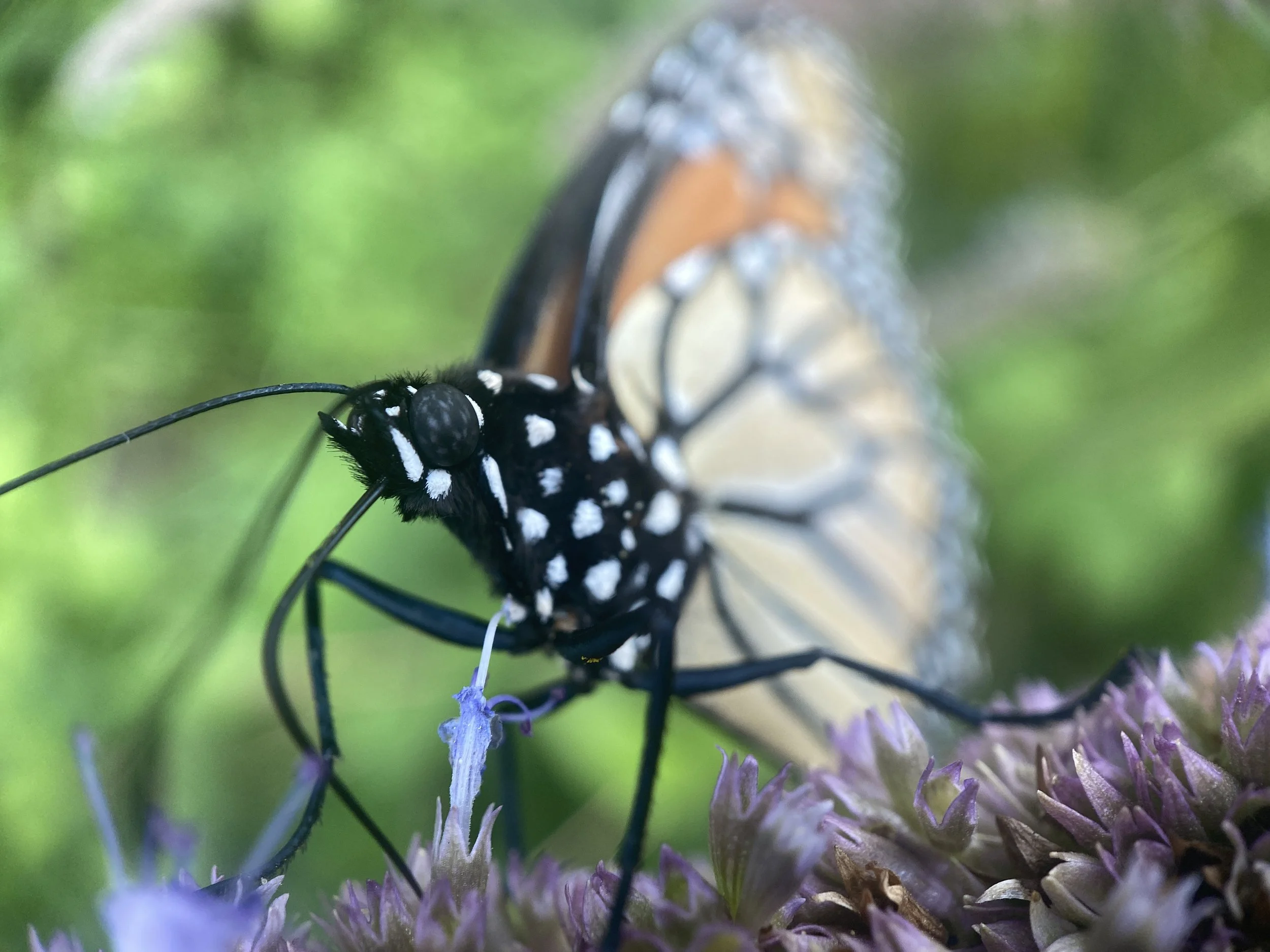Supporting Monarch Butterflies in the Fall: An Oklahoma Guide
Each autumn, millions of monarch butterflies undertake one of the most extraordinary migrations in the natural world. Monarchs from across the northern United States and southern Canada funnel southward through the central flyway. Oklahoma serves as a critical stopover on their journey to the mountains of central Mexico. Our state is one of the last opportunities for them to refuel before crossing Texas and northern Mexico.
If you live in Oklahoma, your garden, yard, or even a small patch of flowers can play an important role in helping monarchs survive their epic migration.
⸻
Nectar, Not Milkweed
Many people know that monarch caterpillars require milkweed (Asclepias species) as their only host plant. In the fall, milkweed is not the main resource monarchs are seeking. Adult monarchs need abundant nectar sources to fuel their southbound flight.
Milkweed does produce nectar, but its thick and sticky blooms are difficult for many pollinators to access. Monarchs and other insects rely more heavily on late-season wildflowers with open, nectar-rich blooms. Planting or protecting these flowers is one of the best ways Oklahomans can support monarchs in the fall.
⸻
Essential Fall Nectar Sources in Oklahoma
In September and October, monarchs depend on late-blooming native plants. Some of the most important include:
• Sunflowers (Helianthus species): Bright, energy-rich blooms that attract large numbers of migrating monarchs.
• Goldenrods (Solidago species): Highly important fall nectar plants, blooming in great abundance across fields and roadsides.
• Asters (Symphyotrichum species): Essential for providing nectar late into October, often blooming even after the first light frosts.
• Blazing Star (Liatris species): Spikes of purple flowers that monarchs flock to during migration.
• Frostweed (Verbesina virginica): A reliable fall bloomer that produces nectar right when monarchs need it most.
• Ironweed (Vernonia species): A strong nectar producer that supports many species of butterflies in late summer and fall.
These wildflowers form the backbone of a monarch-supporting fall landscape in Oklahoma. Even a few of these in your garden can make a difference.
⸻
Why Fall Eggs and Caterpillars Do Not Survive
Occasionally, you may see monarchs laying eggs on milkweed in October. Caterpillars that hatch this late are very unlikely to survive. They need weeks to grow, pupate, and emerge as adults, but freezing weather arrives too soon. By October, monarchs must be migrating instead of reproducing. For this reason, the focus of fall support should be on nectar plants for migrating adults rather than milkweed for caterpillars.
⸻
Creating a Monarch-Friendly Space
Supporting monarchs does not require a large prairie or wildflower meadow. You can help in many ways:
• Plant native fall-blooming flowers. Even a few pots on a balcony or porch can provide meaningful nectar.
• Avoid pesticides. Chemicals such as insecticides and herbicides can kill monarchs directly or wipe out their nectar sources.
• Leave wildflowers standing. Many plants that some people consider weeds, such as goldenrod, ironweed, and frostweed, are vital to monarchs and other pollinators.
• Provide continuous blooms. Plant a mix of species that bloom at different times so monarchs and other pollinators always have food available.
• Support habitat corridors. Monarchs travel long distances and need stepping-stone habitats. By planting natives, you help rebuild these corridors across Oklahoma.
⸻
Oklahoma’s Role in the Monarch Migration
Oklahoma is positioned at the heart of the monarch’s central flyway. Our wildflower fields, prairies, and gardens serve as rest stops where butterflies replenish their fat reserves for the final leg of their journey. Without abundant nectar here, many monarchs would not survive the trek across northern Mexico to their overwintering grounds.
By planting late-blooming natives and protecting wildflower-rich spaces, we contribute directly to the survival of this species. Supporting monarchs in Oklahoma is both a gardening practice and participation in one of the greatest migrations on Earth.
⸻
Final Thoughts
As fall arrives, take a look at your yard, school, or community garden. Do monarchs have something to eat there? If not, consider adding goldenrod, asters, blazing stars, or sunflowers. These simple plantings can transform your space into a fueling station for butterflies making their 3,000-mile journey.
Every bloom counts, and every gardener in Oklahoma has the chance to make a difference. Together, we can ensure that monarchs continue to grace our skies each fall, reminding us of the resilience and beauty of the natural world.
